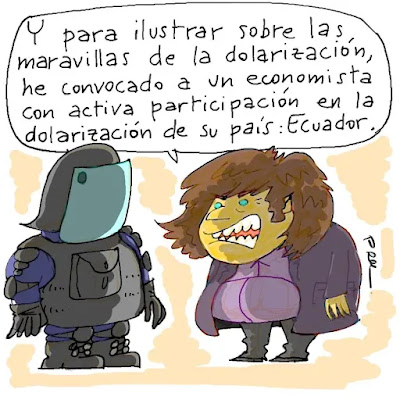"I have invited an economist that was active in the dollarization of Ecuador to illustrate the wonders of the process." A paper with Santiago Graña on dollarization in Argentina published in the PSL Quarterly Review. From the abstract:Currency substitution defined as the use of foreign currency in the domestic economy is a relatively common phenomenon in developing countries. While mainstream economics has analyzed it in some detail, the same is not the case in heterodox economics. This paper proposes an analytical approach to evaluate the effects of currency substitution and its relationship with exchange rate dynamics; it provides an empirical investigation of orthodox and alternative views for the case of Argentina. The orthodox view emphasizes the role of fiscal deficits financed by
Topics:
Matias Vernengo considers the following as important: Argenitina, Dollarization, Graña
This could be interesting, too:
Matias Vernengo writes Argentina on the verge
Matias Vernengo writes The Argentina of Javier Milei
Matias Vernengo writes A short note on Argentina’s depreciation, inflation and possible dollarization
Matias Vernengo writes Argentina and the Philippines: Similar development struggles
A paper with Santiago Graña on dollarization in Argentina published in the PSL Quarterly Review. From the abstract:
Currency substitution defined as the use of foreign currency in the domestic economy is a relatively common phenomenon in developing countries. While mainstream economics has analyzed it in some detail, the same is not the case in heterodox economics. This paper proposes an analytical approach to evaluate the effects of currency substitution and its relationship with exchange rate dynamics; it provides an empirical investigation of orthodox and alternative views for the case of Argentina. The orthodox view emphasizes the role of fiscal deficits financed by monetary emissions, while alternative views emphasize the importance of external vulnerabilities, both associated with current and financial account deficits as the source of currency substitution. We find some support in favor of the alternative or heterodox perspective on currency substitution or dollarization.
Read the full paper here.

